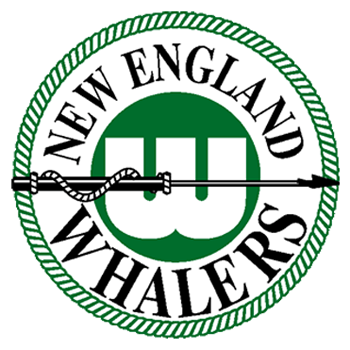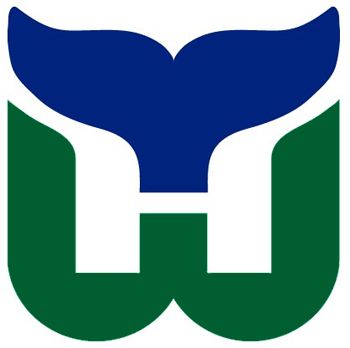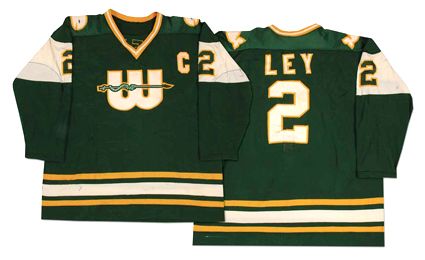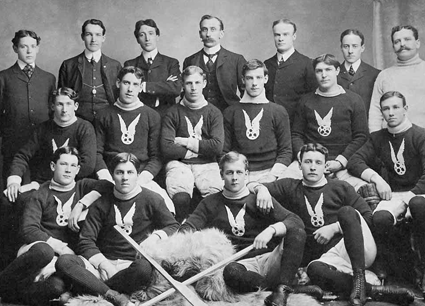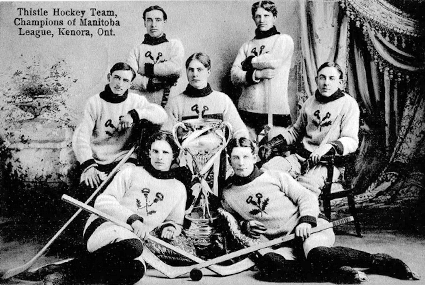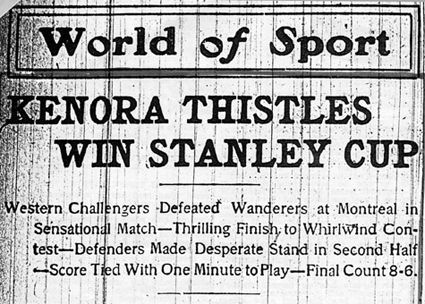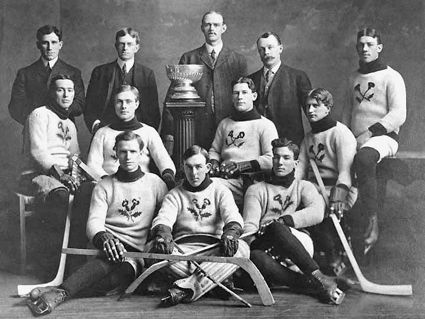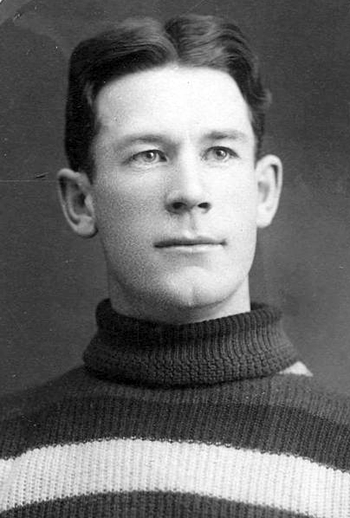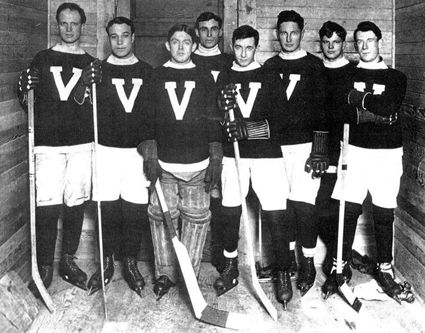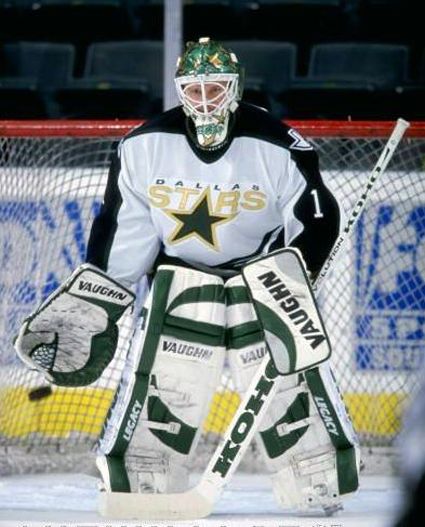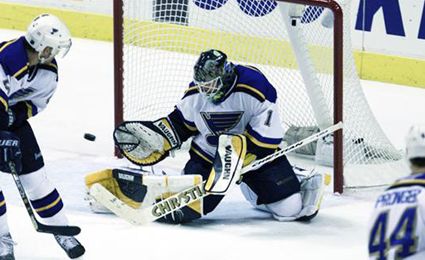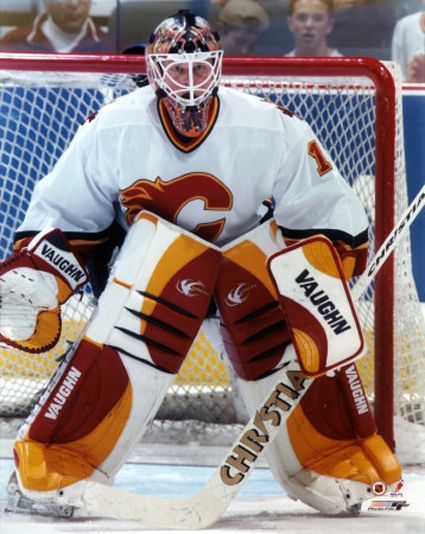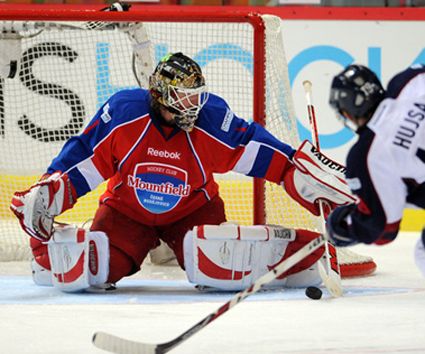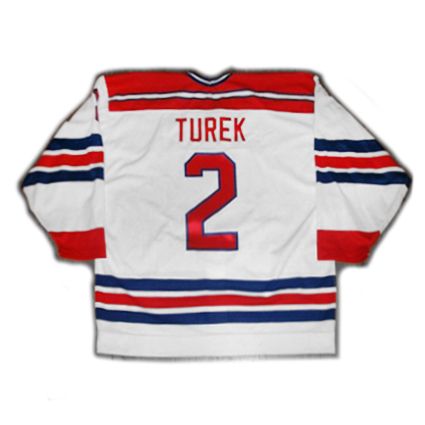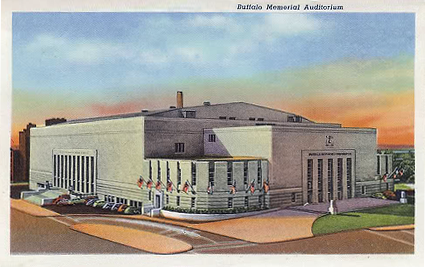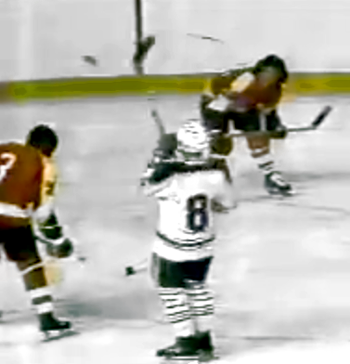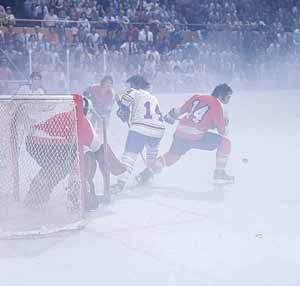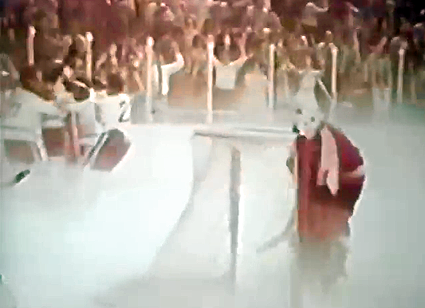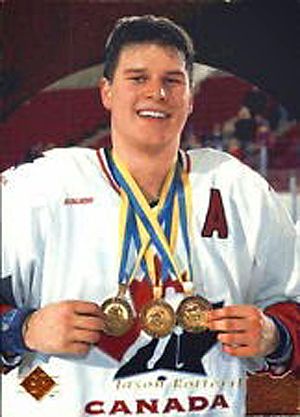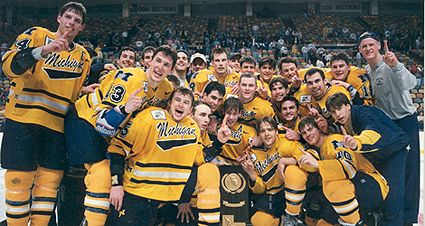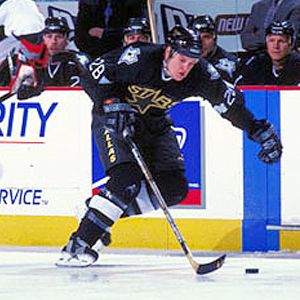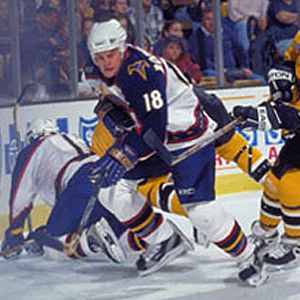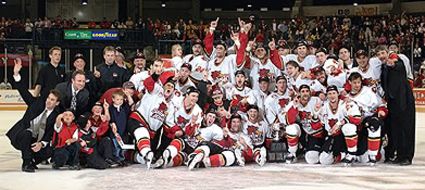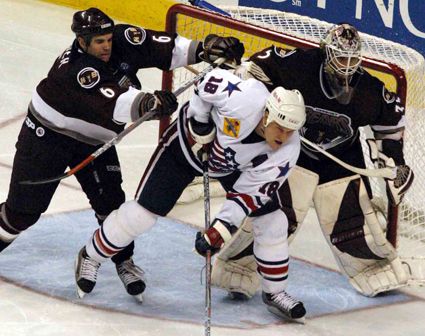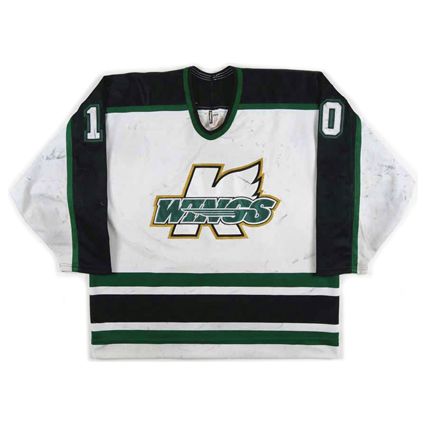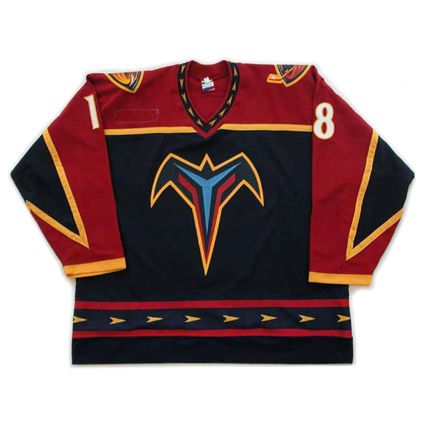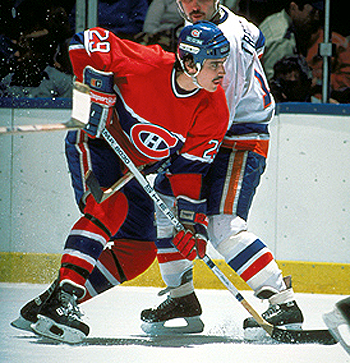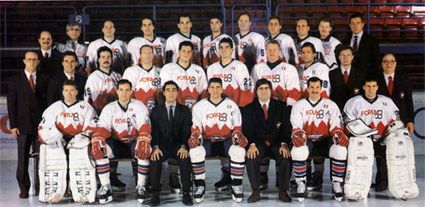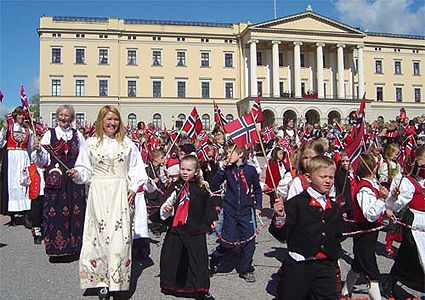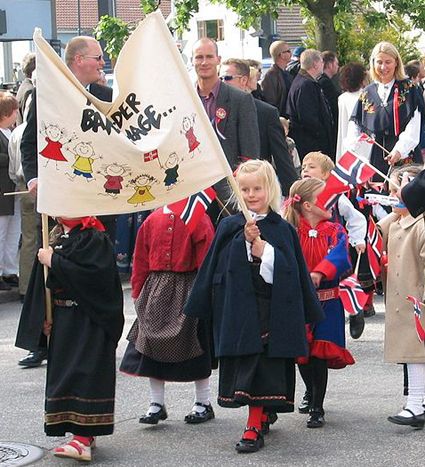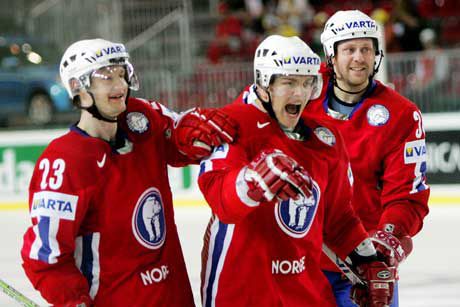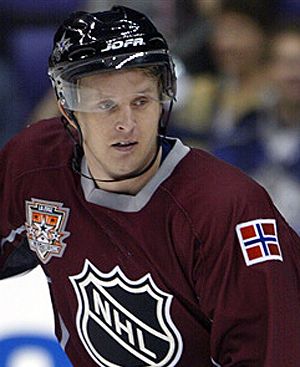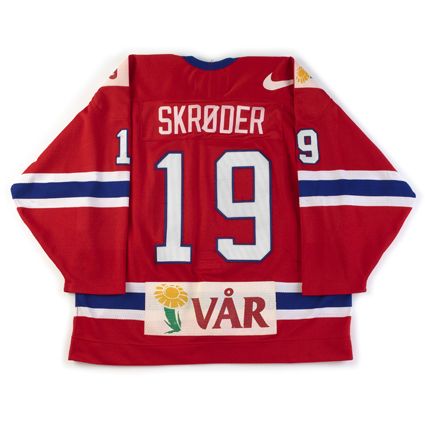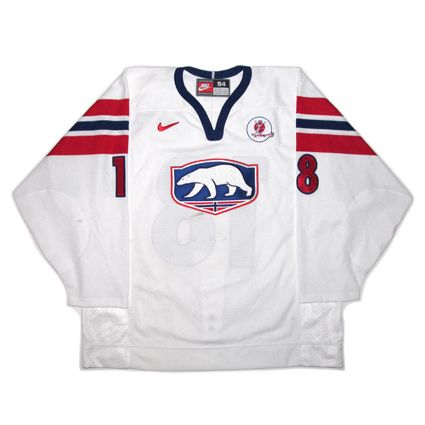Saturday, May 23, 2015
The New England Whalers Become the Hartford Whalers
Founded in 1972, the World Hockey Association began it's first season with an ambitious twelve member clubs located in Cleveland, Boston, New York, Ottawa, Philadelphia, Quebec, Edmonton, Chicago, Houston, Los Angeles, Minnesota and Winnipeg.
Team movement began before the second season had even begun, with Philadelphia relocating to Vancouver and Ottawa finding a new home in Toronto, while New York moved over to New Jersey and underwent a name change.
The third season saw expansion to Indianapolis and Phoenix, while the New Jersey franchise relocated cross-country to San Diego as Los Angeles moved to Detroit for just half a season prior to moving to Baltimore before folding for good after the season, as did Chicago.
And so it went for the next four seasons with additions such as Cincinnati and Denver, teams moving to Calgary, Ottawa again, Birmingham and Minnesota again, while clubs in San Diego, Phoenix, Calgary and Houtson folded after their seasons ended.
Worse, clubs were no longer waiting until the conclusion of the season to fold, as Ottawa, Minnesota (twice) and Indianapolis all called it quits mid-season.
Still, the four constants during all the franchise meandering and bankruptcies were the Edmonton Oilers, Quebec Nordiques, Winnipeg Jets and the New England Whalers, although in the interest of fairness it must be noted that the Whalers did relocate from Boston 91 miles up the freeway to Hartford, Connecticut midway though the 1974-75 season while keeping the "New England" moniker throughout.
The Whalers won the first WHA championship in 1973 and made the finals again in 1978. Finally after several years of negotiations and failed attempts, the Oilers, Jets, Nordiques and Whalers were granted expansion status into the NHL, leaving Birmingham and Cincinnati out in the cold. The original merger/expansion vote was initially rejected by a single vote but a massive boycott of Molson products in Edmonton, Winnipeg and Quebec City led to the Montreal Canadiens, who were owned by Molson at the time, and the Vancouver Canucks to change their votes during a second ballot, approving the plan on March 22, 1979.
One provision of the expansion, as the NHL chose to treat it, rather than a "merger", was the Boston Bruins insisting that the Whalers drop "New England" from their name. Thus, on this date in 1979, the New England Whalers formally changed their name to the Hartford Whalers.
The WHA teams were severely restricted by the terms of the deal. Since they were being treated as expansion clubs, they each were required to pay a $6 million franchise fee to enter the NHL, as well as returning any player who had left the NHL to join the WHA without compensation after being allowed to protect just two goalies and two skaters. They were also placed at the end of the line for the 1979 NHL Entry Draft, rather than having picks 1-4 as any normal expansion club would expect.
The Whalers chose to keep Jordy Douglas, Mark Howe and goaltender John Garrett. An agreement was also reached which allowed Gordie Howe to remain in Hartford despite the Detroit Red Wings legally having the right to reclaim the now 50 year old Howe.
The Whalers did lose Alan Hangsleben (Canucks), Rick Ley (Maple Leafs), George Lyle (Red Wings) and Warren Miller (Rangers) to their original clubs.
Once the reclaiming process was completed, an expansion draft was held, which allowed each NHL team to protect 15 skaters and two goalies before the "new" clubs were allowed to restock their rosters at a cost of $125,000 for each player chosen.
Thus, the Whalers paid $250,000 to simply keep Ley and Hangsleben on their roster in the end when they reclaimed the pair among the 16 players they selected at a cost of $2 million on top of the $6 million they had already been charged simply for the right to become a member of the NHL.
The move to the NHL resulted in an overhaul of the team's sweaters and logo. While the original team colors were simply green and white, gold trim was added for the second season while the crest was simplified to a "W" bisected by a harpoon. These jerseys would remain in use for three seasons before some striping changes to the road jerseys and the player's names changing from one color to two in 1976-77. The home jersey waist striping was changed to mirror that of the road jerseys in 1977-78 through the final WHA season of 1978-79.
On entry to the NHL, gold was dropped in favor of royal blue and a completely new jersey was designed to compliment the brand new, much more modernized team logo.
Today's featured jersey is a 1977-78 New England Whalers Rick Ley jersey. This was the third variation of road jerseys used by the Whalers while in the WHA and differed from the second version only in the waist stripes. No longer was it a wide white stripe with gold trim three stripe pattern, but now a main white stripe (thinner than previous) bordered with a pair of green stripes which were then in turn bordered by a pair of gold stripes in a five stripe "Northwestern" pattern as featured on today's jersey.
Ley played four seasons with the Toronto Maple Leafs prior to moving to the Whalers for their inaugural WHA season of 1972-73 through the demise of the WHA in 1979, being named team captain in 1975.
While Ley was reclaimed by the Maple Leafs as part of the expansion process, the Whalers reclaimed him from the Maple Leafs (for $125,000) and he played two more seasons with the renamed Hartford Whalers in the NHL, remaining team captain until 1980.
He would play 310 NHL games and 478 in the WHA with a combined 47 goals and 329 points plus 1244 penalty minutes. His #2 was one of only three numbers retired by the Whalers franchise.
Today's video section begins with the kind we just live for. First, the Whalers are introduced to the sounds of "Brass Bonanza" in an all-too-short clip, followed by their December 27, 1976 Super Series meeting in which the New England Whalers defeated the Soviet National Team, with Vladislav Tretiak in goal, 5-2!
Labels:
Hartford Whalers,
Ley Rick,
New England Whalers,
WHA
Friday, May 22, 2015
1907 Kenora Thistles Tommy Phillips Jersey
Born in Rat Portage, Ontario, Tommy Phillips played for the local junior team before moving to Montreal to attending McGill University in 1902, where he joined the school's hockey team and was named the team captain. He also found time to play with the Montreal Amateur Athletic Association, who were the present holders of the Stanley Cup at the time Phillips joined the club.
In late January of 1903 the Montreal AAA faced a challenge from the Winnipeg Victorias, which was a best-of-three format. Montreal won Game 1 by a score of 8-1 and Game 2 was declared a tie after 27 minutes of overtime when the clock reached midnight. While Winnipeg won the third game 4-2, Montreal retained the cup with a 4-1 win in the deciding fourth game as Phillips contributed 3 goals during the series.
Phillips moved to Toronto to attend a different school in late 1903, and while there, he joined the Toronto Marlboros of the Ontario Hockey Association and played as their rover. He scored 5 goals in 4 games as the club won the city and province championships, which earned the Marlboros the right to challenge the Ottawa Hockey Club for the cup in late February of 1904, which Ottawa was able to defend 2 games to none.
He returned to Rat Portage to be with his ailing father later in 1904 and took a job with a lumber company as well as a bonus to play hockey for the Rat Portage Thistles. During his first season with the team he finished second in the league with 26 goals in 8 games.
The Thistles won the Manitoba Hockey League title with a 7-1 record and subsequently challenged the Ottawa Senators for the rights to the Stanley Cup in March of 1905, a series won by Ottawa 2 games to 1. The Thistles won the first game 9-3, with Phillips finding the net no less than five times. While Ottawa took the third game by a score of 5-4, Phillips had a hat trick in the losing effort.
The founding fathers of Rat Portage saw fit to merge with the towns of Keewatin and Norman, and taking the first two letters from each, renamed the newly formed municipality Kenora in 1905. While the town's name may have changed, the hockey team kept the name Thistles.
For the 1905-06 season, the Kenora Thistles repeated their 7-1 record to win the league title once more, with Phillips scoring 24 goals in 9 games. However, a warm spring left the teams without suitable ice for a cup challenge until the following winter!
Phillips led the league in 1906-07 with 18 goals in 6 games for Kenora, who then got their long-awaited Stanley Cup challenge against the Montreal Wanderers in January of 1907. The Thistles roster was stacked with four future Hockey Hall of Famers, including "Bad" Joe Hall, Tom Hooper and Art Ross. The format of the series was a two-game, total-goals series. Phillips, the Kenora team captain, led the way in Game 1, scoring all four Thistles goals for a 4-2 win, giving Kenora a 2 goal cushion entering Game 2.
Both Phillips and Hooper recorded hat tricks in Game 2 as Kenora won the game 8-6, taking the series 12-8 and claiming the Stanley Cup for tiny Kenora, the smallest town to ever hold the cup.
After their challenge in January, Kenora returned home with the cup to finish their league schedule, which ran through March. The Thistles won the MPHL league playoff title to retain the cup and were then immediately challenged by the Wanderers in late March. The Thistles had lost three players to injuries and skillfully replaced them all with future Hall of Famers, Alf Smith, Harry "Rat" Westwick and Fred Whitcroft. There was some controversy over Kenora's use of their replacements, but in the end Montreal won back the cup 12 goals to 8 after the series was moved to Winnipeg in search of better playing conditions. Phillips recorded a goal in each of the two games of the challenge.
Phillips was lured east thanks to the rise in professional hockey, as up until 1906 he played in amateur leagues. Despite an potentially higher offer from the Wanderers, Phillips signed to play with Ottawa and finished third in the league with 26 goals.
His stay in Ottawa was brief, as he signed to play for the Edmonton Hockey Club for the 1908-09 season. His first assignment for Edmonton was to participate in their cup challenge against the Wanderers in Montreal. Game 1 was a 7-3 loss for Edmonton, who also lost Phillips for the upcoming season when he broke his ankle during the contest.
He continued to travel west, as he signed for the Nelson Hockey Club in British Columbia for the 1909-10 season before playing the 1911-12 season for the Vancouver Millionaires of the Pacific Coast Hockey Association, where he scored 17 goals in 17 games to bring his career to an end at the age of 29.
Phillips played a total of 67 league and cup games, scoring 141 goals, a career average of over 2 goals per game, and was inducted into the Hockey Hall of Fame as part of it's inaugural class in 1945.
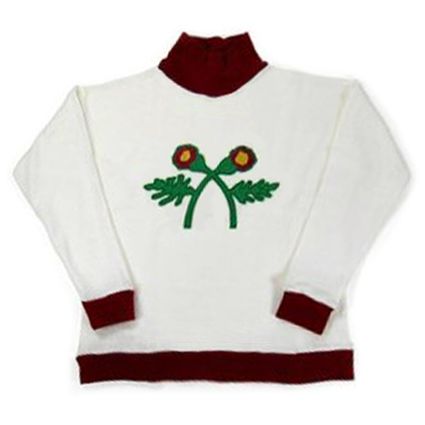
The 1900 Rat Portage Thistles
In late January of 1903 the Montreal AAA faced a challenge from the Winnipeg Victorias, which was a best-of-three format. Montreal won Game 1 by a score of 8-1 and Game 2 was declared a tie after 27 minutes of overtime when the clock reached midnight. While Winnipeg won the third game 4-2, Montreal retained the cup with a 4-1 win in the deciding fourth game as Phillips contributed 3 goals during the series.
The 1903 Montreal Amateur Athletic Association
Phillips moved to Toronto to attend a different school in late 1903, and while there, he joined the Toronto Marlboros of the Ontario Hockey Association and played as their rover. He scored 5 goals in 4 games as the club won the city and province championships, which earned the Marlboros the right to challenge the Ottawa Hockey Club for the cup in late February of 1904, which Ottawa was able to defend 2 games to none.
He returned to Rat Portage to be with his ailing father later in 1904 and took a job with a lumber company as well as a bonus to play hockey for the Rat Portage Thistles. During his first season with the team he finished second in the league with 26 goals in 8 games.
The Thistles won the Manitoba Hockey League title with a 7-1 record and subsequently challenged the Ottawa Senators for the rights to the Stanley Cup in March of 1905, a series won by Ottawa 2 games to 1. The Thistles won the first game 9-3, with Phillips finding the net no less than five times. While Ottawa took the third game by a score of 5-4, Phillips had a hat trick in the losing effort.
The founding fathers of Rat Portage saw fit to merge with the towns of Keewatin and Norman, and taking the first two letters from each, renamed the newly formed municipality Kenora in 1905. While the town's name may have changed, the hockey team kept the name Thistles.
For the 1905-06 season, the Kenora Thistles repeated their 7-1 record to win the league title once more, with Phillips scoring 24 goals in 9 games. However, a warm spring left the teams without suitable ice for a cup challenge until the following winter!
The 1906 Kenora Thistles
Phillips led the league in 1906-07 with 18 goals in 6 games for Kenora, who then got their long-awaited Stanley Cup challenge against the Montreal Wanderers in January of 1907. The Thistles roster was stacked with four future Hockey Hall of Famers, including "Bad" Joe Hall, Tom Hooper and Art Ross. The format of the series was a two-game, total-goals series. Phillips, the Kenora team captain, led the way in Game 1, scoring all four Thistles goals for a 4-2 win, giving Kenora a 2 goal cushion entering Game 2.
Both Phillips and Hooper recorded hat tricks in Game 2 as Kenora won the game 8-6, taking the series 12-8 and claiming the Stanley Cup for tiny Kenora, the smallest town to ever hold the cup.
After their challenge in January, Kenora returned home with the cup to finish their league schedule, which ran through March. The Thistles won the MPHL league playoff title to retain the cup and were then immediately challenged by the Wanderers in late March. The Thistles had lost three players to injuries and skillfully replaced them all with future Hall of Famers, Alf Smith, Harry "Rat" Westwick and Fred Whitcroft. There was some controversy over Kenora's use of their replacements, but in the end Montreal won back the cup 12 goals to 8 after the series was moved to Winnipeg in search of better playing conditions. Phillips recorded a goal in each of the two games of the challenge.
The 1907 Stanley Cup Champion Kenora Thistles
Phillips was lured east thanks to the rise in professional hockey, as up until 1906 he played in amateur leagues. Despite an potentially higher offer from the Wanderers, Phillips signed to play with Ottawa and finished third in the league with 26 goals.
Tommy Phillips while with the Ottawa Senators
His stay in Ottawa was brief, as he signed to play for the Edmonton Hockey Club for the 1908-09 season. His first assignment for Edmonton was to participate in their cup challenge against the Wanderers in Montreal. Game 1 was a 7-3 loss for Edmonton, who also lost Phillips for the upcoming season when he broke his ankle during the contest.
He continued to travel west, as he signed for the Nelson Hockey Club in British Columbia for the 1909-10 season before playing the 1911-12 season for the Vancouver Millionaires of the Pacific Coast Hockey Association, where he scored 17 goals in 17 games to bring his career to an end at the age of 29.
Phillips final club, the 1911-12 Vancouver Millionaires
Phillips played a total of 67 league and cup games, scoring 141 goals, a career average of over 2 goals per game, and was inducted into the Hockey Hall of Fame as part of it's inaugural class in 1945.
Today's featured jersey is a 1907 Kenora Thistles Tommy Phillips jersey. The Thistles name was chosen in a contest and the winner was a local Scottish carpenter named Bill Dunsmore who not only submitted the name in reference to the region's Scottish heritage, but a drawing of a thistle for the team's logo.
This jersey is the style worn by the 1907 Stanley Cup champion Thistles club. These jerseys were reproduced by the CBC in connection with their "Hockey: A People's History" documentary, and are sadly no longer available on demand.

In another one of those amazing youtube moments, here is a video on the Kenora Thistles. While the original Thistle club disbanded in 1908, subsequent clubs in Kenora have adopted the Thistle name, which was the case for the club that Louis McKay played on in 1934.
Labels:
Kenora Thistles,
Phillips Tommy
Thursday, May 21, 2015
1996 Czech Republic National Team Roman Turek Jersey
Goaltender Roman Turek began his hockey career in his native Czechoslovakia with the HC Ceske Budejovice U18 and U20 junior teams beginning with the 1984-85 season. During this time he made a successful international debut with Czechoslovakia during the 1988 IIHF U18 European Junior Tournament where he won a gold medal.
For the 1988-89 season Turek joined the second division club VTJ Pisek, with whom he would play for two seasons. He would also participate in both the 1989 and 1990 IIHF World Junior Tournaments, earning a pair of bronze medals in the process.
He returned to HC Ceske Budejovice for the 1990-91 season, where he saw action in 26 games. Budejovice was relegated to the second division for the 1991-92 season, but were promoted back to the top division for 1992-93. By now Turek had taken over as the team's number one netminder and left little but scraps for his fellow goaltenders as he played 43, 44 and 44 games of the shorter European schedule and earning Czech Player of the Year honors in 1994.
Internationally, the world was in a state of change, particularly in eastern Europe. One major change was the division of Czechoslovakia into the Czech Republic and Slovakia. Turek, born in Strakonice in the western side of the Czech half of the country, would play for the Czech Republic going forward, beginning with the 1993 World Championships where he won a bronze medal. In 1994 Turek made his Olympic debut followed later in the spring with a second World Championship. He returned for the World Championships again in 1995 where he earned a berth on the tournament All-Star Team.
Turek took his game to Germany for the 1995-96 season as he joined the Nürnberg Ice Tigers of the DEL in what proved to be a busy year. He first set a new career high in games played with 48 before backstopping the Czechs to a gold medal at the 1996 World Championships with a 1.88 goals against average in 8 games played, earning not only tournament all-star recognition, but also being named the tournament's Best Goaltender. Later that fall Turek was the Czechs starting goaltender for the inaugural World Cup of Hockey.
His career took a dramatic turn for the 1996-97 season. Having been drafted by the Minnesota North Stars in 1990, who had subsequently moved to Dallas in 1992, Turek came to North America and spent most of the year getting acclimated to the culture and style of hockey on this side of the Atlantic as he played with the Michigan K-Wings of the International Hockey League. He would also make his NHL debut with 6 games for the Dallas Stars, making a fine showing with a 2.05 goals against and a 93% save percentage in six appearances.
He played 23 games with Dallas in 1997-98 as a backup to Ed Belfour, winning 11. In 1998-99 Turek went 16-3-3 in 26 games with the Stars, who went on to win the Stanley Cup that season.
Turek was dealt to the St. Louis Blues over the summer, where he immediately became their number one, playing in 67 games and setting an immediate career high with 42 wins as well as a career best 1.95 goals against average, which won him his second consecutive Jennings Trophy. He would play one more season with St. Louis before being dealt to the Calgary Flames in exchange for three players.
The Flames rode Turek for the 2001-02 season, which allowed him to establish a career high of 69 games, followed by 65 the following season. During that season he also made his second trip to the Olympics with the Czech Republic. The 2003-04 season saw a lot of competition for playing time in the Calgary nets, with Turek playing in 18 games while competing for playing time with Jamie McLennan and Miikka Kiprusoff.
This would prove to be the end of Turek's NHL career, as he returned to Ceske Budejovice for the 2004-05 season while the NHL lockout was in progress to help the club gain a promotion out of the second division.
He remained with Budejovice for the next five years from 2005-06 through 2009-10, including winning Czech Extraliga Player of the Year in 2008 before his retirement. He later became first Budejovice s goaltending coach and then team president in 2013.
Today's featured jersey is a 1996 Czech Republic National Team Roman Turek jersey, a one year only style worn by Turek and the Czechs as they won their first World Championship playing as an independent nation following the division of Czechoslovakia. Somewhat unique to the Czechs, their goaltenders were often assigned the numbers 1 and 2, while most nations traditionally gave out #2 to defensemen.
Todays video section begins with a pair of videos from the gold medal game of the 1996 World Championships, the first being the introduction of the Czech squad and the second a highlight video showing the Czechs defeating Canada to capture an emotional World Championship, their first as the Czech Republic since the division of Czechoslovakia just three years earlier.
For the 1988-89 season Turek joined the second division club VTJ Pisek, with whom he would play for two seasons. He would also participate in both the 1989 and 1990 IIHF World Junior Tournaments, earning a pair of bronze medals in the process.
He returned to HC Ceske Budejovice for the 1990-91 season, where he saw action in 26 games. Budejovice was relegated to the second division for the 1991-92 season, but were promoted back to the top division for 1992-93. By now Turek had taken over as the team's number one netminder and left little but scraps for his fellow goaltenders as he played 43, 44 and 44 games of the shorter European schedule and earning Czech Player of the Year honors in 1994.
Internationally, the world was in a state of change, particularly in eastern Europe. One major change was the division of Czechoslovakia into the Czech Republic and Slovakia. Turek, born in Strakonice in the western side of the Czech half of the country, would play for the Czech Republic going forward, beginning with the 1993 World Championships where he won a bronze medal. In 1994 Turek made his Olympic debut followed later in the spring with a second World Championship. He returned for the World Championships again in 1995 where he earned a berth on the tournament All-Star Team.
Turek took his game to Germany for the 1995-96 season as he joined the Nürnberg Ice Tigers of the DEL in what proved to be a busy year. He first set a new career high in games played with 48 before backstopping the Czechs to a gold medal at the 1996 World Championships with a 1.88 goals against average in 8 games played, earning not only tournament all-star recognition, but also being named the tournament's Best Goaltender. Later that fall Turek was the Czechs starting goaltender for the inaugural World Cup of Hockey.
His career took a dramatic turn for the 1996-97 season. Having been drafted by the Minnesota North Stars in 1990, who had subsequently moved to Dallas in 1992, Turek came to North America and spent most of the year getting acclimated to the culture and style of hockey on this side of the Atlantic as he played with the Michigan K-Wings of the International Hockey League. He would also make his NHL debut with 6 games for the Dallas Stars, making a fine showing with a 2.05 goals against and a 93% save percentage in six appearances.
He played 23 games with Dallas in 1997-98 as a backup to Ed Belfour, winning 11. In 1998-99 Turek went 16-3-3 in 26 games with the Stars, who went on to win the Stanley Cup that season.
Turek was dealt to the St. Louis Blues over the summer, where he immediately became their number one, playing in 67 games and setting an immediate career high with 42 wins as well as a career best 1.95 goals against average, which won him his second consecutive Jennings Trophy. He would play one more season with St. Louis before being dealt to the Calgary Flames in exchange for three players.
Turek set a career high in wins with the Blues
The Flames rode Turek for the 2001-02 season, which allowed him to establish a career high of 69 games, followed by 65 the following season. During that season he also made his second trip to the Olympics with the Czech Republic. The 2003-04 season saw a lot of competition for playing time in the Calgary nets, with Turek playing in 18 games while competing for playing time with Jamie McLennan and Miikka Kiprusoff.
This would prove to be the end of Turek's NHL career, as he returned to Ceske Budejovice for the 2004-05 season while the NHL lockout was in progress to help the club gain a promotion out of the second division.
He remained with Budejovice for the next five years from 2005-06 through 2009-10, including winning Czech Extraliga Player of the Year in 2008 before his retirement. He later became first Budejovice s goaltending coach and then team president in 2013.
Today's featured jersey is a 1996 Czech Republic National Team Roman Turek jersey, a one year only style worn by Turek and the Czechs as they won their first World Championship playing as an independent nation following the division of Czechoslovakia. Somewhat unique to the Czechs, their goaltenders were often assigned the numbers 1 and 2, while most nations traditionally gave out #2 to defensemen.
Todays video section begins with a pair of videos from the gold medal game of the 1996 World Championships, the first being the introduction of the Czech squad and the second a highlight video showing the Czechs defeating Canada to capture an emotional World Championship, their first as the Czech Republic since the division of Czechoslovakia just three years earlier.
Labels:
Czech Republic,
Turek Roman
Wednesday, May 20, 2015
The Fog Game - 1974-75 Buffalo Sabres Rene Robert Jersey
In 1973-74, the Buffalo Sabres had finished mid-pack and missed out on the Stanley Cup playoffs. They rebounded strongly in 1974-75, winning the newly created Adams Division and finishing tied with the defending Stanley Cup Champions, the Philadelphia Flyers and also the Montreal Canadiens with 113 points.
The Sabres, led by The French Connection line, which consisted of Rene Robert (with a team leading 100 points), Gilbert Perreault (96 points) and Rick Martin (95 points), defeated the Chicago Black Hawks 4 games to 1 in the quarterfinals before ousting the Canadiens 4-2 to reach their first Stanley Cup Finals in only their fifth season of play.
Game 1 of the finals, the first without an Original Six team since 1926, was played in Philadelphia's Spectrum and went to the Flyers 4-1. Philadelphia also took Game 2 by a close 2-1 margin.
The series then moved to the Buffalo Memorial Auditorium for Game 3 on this date in 1975, which would prove to be one of the strangest games in NHL history.
"The Aud" was originally constructed in 1940, the building was renovated with the arrival of the Sabres and Buffalo Braves of the NBA in 1970.
"The Aud" was originally constructed in 1940, the building was renovated with the arrival of the Sabres and Buffalo Braves of the NBA in 1970.
Early in Game 3, a bat was spotted flying near ice level during the game. Finally at one point, with the teams line up for a face off in the Flyers zone, with the bat buzzing the players heads, Jim Lorentz raised his stick and swatted the bat out of midair and Rick MacLeish of the Flyers picked up the dead creature and deposited it over the boards at the Flyers bench.
As time passed, the sell out crowd of over 16,000 fans began to have an effect, as the non-air conditioned arena began to get warmer and steamier. Temperatures at ice level eventually got so warm that a layer of fog began to appear on the ice.
Eventually, the fog became thicker and thicker, causing the officials to halt play several times because the players could not see halfway down the ice. Several attempts were made to deal with the fog, including having the players skate in circles to try to stir up the air and clear the fog, as well as having the arena staff quickly raise and lower bed sheets to move larger amounts of air with some effect.
Play was resumed, but then stopped again and again and the visibility remained poor. Eventually both coaches, Fred Shero of the Flyers and Floyd Smith of the Sabres instructed their players to shoot as often as possible since the opposing goaltender was going to have problems seeing the puck.
Down by two goals, the Sabres fought back with a pair of goals by Danny Gare and Martin just 17 seconds apart to even the score at 2-2 before the struggling Sabres goaltender Gerry Desjardins let in a shot by MacLeish from 40 feet to put the Flyers back in the lead at the end of the first period.
During the intermission, Desjardins asked to be relieved in the Sabres goal. "After the second goal against me, I thought it was a grand time to get the hell out of there. I knew if I had stayed in, everything would have gone down the drain," Desjardins said following the game. "After all, we were only down by one goal. It was close at the end of the first period, Why waste it?"
During the second period, Reggie Leach scored on his own rebound after a wild scramble in front of new Sabres goalie Roger Crozier to give the Flyers a 4-2 lead, but Don Luce was able to put one past Bernie Parent to send the game into the third with Philadelphia up 4-3.
During the third period, defenseman Bill Hajt of Buffalo put in a rebound of a shot by Martin to even the score and eventually send the game into overtime.
The fog continued to disrupt play in overtime, causing seven stoppages. Finally, with about a minute to play, Perreault skated into the Flyers zone and passed the puck to Robert in the far corner. Robert, along the goal line, shot the puck from the sharp angle, which eluded Parent and went between his legs for the winning goal for the Sabres after nearly 80 minutes of play, sending the crowd into a frenzy.
"I didn't see Perreault's pass," said Parent. "I saw Robert's shot too late for me to come out and stop it. I'm surprised he overtime took so long. It was hard to see the puck from the red line. If three men came down and made a good pass from the red line, you couldn't see the puck. A good shot from the red line could have won it. But it was the same thing for Crozier."
"There had been a lot of pressure on our line," Robert said. "People saw we scored so many goals during the season, what has happened to us now, that we're letting down, the we don't check. Philadelphia double shifts our line, you know, and they are a real good team, too. Getting a big goal like that makes you feel good. It has been tough for us."
Today's featured jersey is a 1974-75 Buffalo Sabres Rene Robert jersey as worn when Robert scored the winning goal in overtime of the "Fog Game" in the 1975 Stanley Cup Finals.
The original Sabres jerseys, worn from 1970-71 to 1976-77 featured a lace-up collar and no names on the back, unless it was for a national TV game, in which case names were added and then removed afterwards, as the club owners felt that not having names on the backs of the jerseys would lead to increased program sales.
Our video section today begins with a quick look at the bat attack and the fog bank which later descended over the ice.
Here is a longer look at the game, including the winning goal, with quotes from broadcaster Rick Jeanneret, Lorentz and winning goal scorer Robert.
This look at the history of "The Aud" includes footage of Robert's overtime goal in the fog.
This look at the history of "The Aud" includes footage of Robert's overtime goal in the fog.
Labels:
Buffalo Sabres,
Robert Rene
Tuesday, May 19, 2015
1997-98 Michigan K-Wings Jason Botterill Jersey
Jason Botterill's hockey career got off to a successful start beginning with the 1993-94 season, as the University of Michigan Wolverines freshman scored 20 goals and 39 points in 36 games. During that season he also won a gold medal at the World Junior Tournament playing for his native Canada. Following the season Botterill was drafted 20th overall in the first round of the 1994 NHL Entry Draft by the Dallas Stars.
During his second season with Michigan, Botterill won another gold medal at the World Juniors before his memorable 1995-96 season. He completed his World Junior hat trick with a third gold medal in January, making him the only Canadian to ever win a gold medal in three straight World Juniors.
He completed his NCAA season with 32 goals and 57 points in 37 games, while adding 143 penalty minutes, as Michigan defeated the Colorado College Tigers 3-2 in overtime to win the NCAA national title to complete a championship double in the space of three months.
He returned for his senior season with the Wolverines as a team captain and had his finest season with the maize and blue with NCAA career highs with 37 goals and 61 points in 42 games.
For the 1997-98 season, Botterill was assigned to the Michigan K-Wings of the International Hockey League where he played in 50 games that season. He also made his NHL debut with the Stars with appearances in 4 games.
While Botterill scored 38 points in 56 games for the K_Wings in 1998-99, he went scoreless in 17 games with Dallas, who traded him to the Atlanta Thrashers in the offseason. He played 25 games for Atlanta that season, which included scoring his first NHL goal. He would play an additional 17 games with the Orlando Solar Bears of the IHL before a trade in February of 2000 sent him to the Calgary Flames organization.
He played a pair of games with the Flames but spent the majority of the rest of the season with the Saint John Flames of the American Hockey League.
Botterill, born on this date in 1976, spent the entire 2000-01 season with Saint John, scoring 33 points in 60 games before adding an additional 9 points in 19 playoff games as the Flames would win the Calder Cup as champions of the IHL.
He would captain Saint John for the 2001-02, scoring 42 points evenly divided between goals and assists in 71 games. Botterill also made four appearances for Calgary in the NHL, where he would score his second goal in the NHL.
Thanks to his fine season with Saint John, Botterill was signed by the Buffalo Sabres for 2002-03, who assigned him to the Rochester Americans of the AHL, which led to his finest season as a professional as he scored 37 goals and 59 points, good for second on the team in 64 games. He also found time to play 17 games with the Sabres. tallying a goal and 5 points.
The 2003-04 season was more of the same, as he split his time between Rochester (46 games) and Buffalo, where he played a career high 19 NHL games, scoring twice. Rochester then made a deep playoff run, defeating Syracuse and Hamilton before losing to Milwaukee in the conference finals.
Botterill would start the 2004-05 season with the Americans, but 8 games into the season he would suffer a career ending concussion. His final totals from the NHL were He remained active in hockey, first working for the NHL and now currently an Associate General Manager of the Pittsburgh Penguins.
Today's featured jersey is a 1997-98 Michigan K-Wings Jason Botterill jersey as worn during Botterill's first season as a professional. The club was founded in 1974 as the Kalamazoo Wings with the colors of red and white to reflect their affiliation with the cross-state Detroit Red Wings. When the club changed it's affiliation to the Minnesota North Stars in 1988, they adopted the North Stars colors of green, gold and black. Their affiliation with the organization remained intact after the NHL franchise relocated to Dallas for the 1992-93 season. After two additional seasons, the club changed it's named to the Michigan K-Wings. The instability of the IHL and the Stars ending their relationship with the club led to franchise requesting inactive status for 2000-01 before folding for good when the IHL itself imploded.
Bonus jersey: Today's bonus jersey is a 1999-00 Atlanta Thrashers Jason Botterill jersey. The Thrashers wore this style from their debut in 1999-00 through the change to Reebok Edge jerseys for 2007-08, seven seasons in all, not counting the lost season of 2004-05.
During his second season with Michigan, Botterill won another gold medal at the World Juniors before his memorable 1995-96 season. He completed his World Junior hat trick with a third gold medal in January, making him the only Canadian to ever win a gold medal in three straight World Juniors.
Botterill remains the only Canadian to win
three gold medals at the World Junior Tournament
He completed his NCAA season with 32 goals and 57 points in 37 games, while adding 143 penalty minutes, as Michigan defeated the Colorado College Tigers 3-2 in overtime to win the NCAA national title to complete a championship double in the space of three months.
Botterill's magic 1996 season ended with an NCAA championship
He returned for his senior season with the Wolverines as a team captain and had his finest season with the maize and blue with NCAA career highs with 37 goals and 61 points in 42 games.
For the 1997-98 season, Botterill was assigned to the Michigan K-Wings of the International Hockey League where he played in 50 games that season. He also made his NHL debut with the Stars with appearances in 4 games.
Botterill made his NHL debut with Dallas
While Botterill scored 38 points in 56 games for the K_Wings in 1998-99, he went scoreless in 17 games with Dallas, who traded him to the Atlanta Thrashers in the offseason. He played 25 games for Atlanta that season, which included scoring his first NHL goal. He would play an additional 17 games with the Orlando Solar Bears of the IHL before a trade in February of 2000 sent him to the Calgary Flames organization.
Botterill scored his first NHL goal with Atlanta
He played a pair of games with the Flames but spent the majority of the rest of the season with the Saint John Flames of the American Hockey League.
Botterill, born on this date in 1976, spent the entire 2000-01 season with Saint John, scoring 33 points in 60 games before adding an additional 9 points in 19 playoff games as the Flames would win the Calder Cup as champions of the IHL.
The Saint John Flames celebrate their 2001 Calder Cup championship
He would captain Saint John for the 2001-02, scoring 42 points evenly divided between goals and assists in 71 games. Botterill also made four appearances for Calgary in the NHL, where he would score his second goal in the NHL.
Thanks to his fine season with Saint John, Botterill was signed by the Buffalo Sabres for 2002-03, who assigned him to the Rochester Americans of the AHL, which led to his finest season as a professional as he scored 37 goals and 59 points, good for second on the team in 64 games. He also found time to play 17 games with the Sabres. tallying a goal and 5 points.
Botterill causing havoc while with the Americans
The 2003-04 season was more of the same, as he split his time between Rochester (46 games) and Buffalo, where he played a career high 19 NHL games, scoring twice. Rochester then made a deep playoff run, defeating Syracuse and Hamilton before losing to Milwaukee in the conference finals.
Botterill would start the 2004-05 season with the Americans, but 8 games into the season he would suffer a career ending concussion. His final totals from the NHL were He remained active in hockey, first working for the NHL and now currently an Associate General Manager of the Pittsburgh Penguins.
Today's featured jersey is a 1997-98 Michigan K-Wings Jason Botterill jersey as worn during Botterill's first season as a professional. The club was founded in 1974 as the Kalamazoo Wings with the colors of red and white to reflect their affiliation with the cross-state Detroit Red Wings. When the club changed it's affiliation to the Minnesota North Stars in 1988, they adopted the North Stars colors of green, gold and black. Their affiliation with the organization remained intact after the NHL franchise relocated to Dallas for the 1992-93 season. After two additional seasons, the club changed it's named to the Michigan K-Wings. The instability of the IHL and the Stars ending their relationship with the club led to franchise requesting inactive status for 2000-01 before folding for good when the IHL itself imploded.
Bonus jersey: Today's bonus jersey is a 1999-00 Atlanta Thrashers Jason Botterill jersey. The Thrashers wore this style from their debut in 1999-00 through the change to Reebok Edge jerseys for 2007-08, seven seasons in all, not counting the lost season of 2004-05.
Rather than create a reverse of their white home jersey, the Thrashers got around NHL rules that dictated they not be allowed to have an alternate jersey until their fourth season in the league by choosing to feature their secondary shoulder logo as the primary logo on their dark "road" jersey from the start of their first season, essentially wearing a "home" and an "alternate" as their first set of jerseys.
Sharp eyed readers will notice this jersey lacks the NHL 2000 patch worn during the Thrashers debut season, but on closer inspection the stitching where the patch was located is still evident.
Botterill wore this jersey when he scored the first NHL goal of his career, which came on the road on January 4, 2000 against his future club the Buffalo Sabres.
In today's video section, Penguins associate general manager Botterill talks to the media after the conclusion of the 2014 NHL draft.
Labels:
Atlanta Thrashers,
Botterill Jason,
Michigan K-Wings
Monday, May 18, 2015
1999-00 Frankfurt Lions John Chabot Jersey
Born on this date in 1962, John Chabot, an Algonquin Aboriginal, played in the Quebec Major Junior League for the Hull Olympiques after being drafted first overall in the 1979 QMJHL draft. In his first season with Hull, Chabot scored 26 goals and 57 assists for 83 points in 68 games. Following that season, he was selected by the Montreal Canadiens 40th overall in the 1980 NHL Entry Draft. He exceeded his point totals in all categories the following year with 27 goals, 62 assists and 89 points.
The 1981-82 season saw Chabot move to the Sherbrooke Beavers, where he raised his game with a new high of 34 goals, but exploded in the assist category with a remarkable 109 in 62 games to lead the league, giving him 143 points for the season. He was named the winner of the CCM QMJHL Player of the Year as well as the recipient of the Michel Briere Memorial Trophy as league MVP, an award won by Dale Hawerchuk and Denis Savard in the two previous seasons and in subsequent seasons by Pat Lafontaine and Mario Lemieux.
He spent the 1982-83 season in the American Hockey League with the Nova Scotia Voyageurs proving he was ready for the NHL with 89 points in 76 games.
His NHL debut came in 1983-84 with the Canadiens, dressing for 56 games, scoring 18 goals and 43 points plus seeing action in 11 playoff games.
Ten games into the following season Chabot was dealt to the Pittsburgh Penuins, where he racked up assists on a regular basis to finish the season with 60 points from 51 assists in 77 games.
After another season with the Penguins, Chabot signed with the Detroit Red Wings as a free agent for the 1987-88 campaign. There, he scored an NHL career high 57 points from 13 goals and 44 assists, plus an additional 19 points in 16 playoff contests as the Red Wings advanced to the conference finals.
Chabot had a rough season in 1988-89, playing only 52 games with Detroit and registering a meager 12 points, as well as an eight game stint with Adirondack in the AHL, where he scored just under two points a game.
He found his game again in 1989-90, playing the full season in Detroit and scoring 49 points in 69 games, but 1990-91 was split between Adirondack and Detroit, with 27 games for each, scoring the final 10 points of his NHL career.
1991-92 saw him appear in eight games for the Canadian National Team before moving to Italy with HC Devils Milano, where he dominated with 45 points in 17 games before adding 17 points in 13 playoff games as Milan won the Italian Serie A championship.
After beginning the season with Milan, Chabot moved to the Berlin Capitals of the German Bundesliga. He would play for the Capitals for five seasons, which saw the formation of the new Deutsche Eishockey Liga (DEL) in 1994, and average 1.37 points per game, with a high of 81 points in 50 games.
The 1997-98 season had Chabot on the move to the Frankfurt Lions where he led the DEL in scoring with 63 points. He became team captain and was able to maintain his average of more than a point per game in the DEL with 1.05 points per game while with Frankfurt with a high of 64 points in 57 games in 1998-99.
Chabot played his final season in 2000-01 with the Berlin Polar Bears and completed his career with 1188 games played, 315 goals and 902 assists for 1217 points in 18 professional seasons. His final NHL totals were 508 games, 84 goals and 228 assists for 312 points, which currently ranks sixth all time for players born in Prince Edward Island.
Today's featured jersey is a 1999-00 Frankfurt Lions John Chabot jersey. This jersey features a number of sponsorship logos typical of European jerseys and also sports the captain's "C" and 2000 DEL playoff logo on the right chest.
Unlike North American jersey standards, this jersey has Chabot's name placed below the numbers rather than above.
Today's first video features Chabot scoring a power play goal while playing for the Penguins, followed by a breakaway goal from 1985 with a nice celebration move afterwards.
Look out Loretta, Chabot scores against the Oilers in 1987.
Next, coach Chabot teaches youngsters how to do a proper wrist shot. There are additional videos featuring Chabot on skating and stickhandling. Most recently, Chabot was an assistant coach for the New York Islanders in the 2008-09 season.
Labels:
Chabot John,
DEL,
Frankfurt Lions
Sunday, May 17, 2015
Syttende Mai - 1999 Norway National Team Per-Åge Skrøder Jersey
Norwegian Constitution Day, commonly known as Syttende Mai, which translates to "17th of May", is a celebration of the 1814 signing of Norway's constitution in the town of Eidsvoil, declaring Norway as an independent nation.
While it was celebrated to a certain degree in it's early days, Norway was actually still a part of the Kingdom of Sweden and the celebrations were not encouraged and were actually forbidden for a time in the 1820's. A protest incident in 1829 led to the celebration being tolerated.
Bonus jersey: Today's bonus jersey is a 1998 Norway National Team Ole Eskild Dahlstrøm jersey as worn during the 1998 World Championships Group B held in Slovenia.
Today's video section is highlights of Norway's shootout win over Sweden at the 2011 IIHF World Championships, their first ever win against Sweden in 61 years of trying.
It would take until 1864 for Syttende Mai to become more established, which included a children's parade, which is now a vital part of modern celebrations, with the largest being in Oslo, where 100,000 people turn out to take part in the festivities, which see approximately 100 schools and marching bands pass by the Royal Palace where the Royal Family observes from their balcony as the children march by and sing when they are not blowing whistles and rattling noise makers.
Additionally, the children are frequently wearing traditional costumes or ribbons in the colors of the flag, as well as carrying Norwegian flags.
There are also varying traditions of the public joining in behind the children's parade or a separate public parade either before or after the children's parade. Following the parades, there are games for the children as well as hot dogs, ice cream, pop and candy.
Norway has been a member of the IIHF since 1935 and currently participates at the top level of the World Championships, and have done so since being promoted by winning Division 1 in 1995 with their best finish being a 4th place in 1951, which included defeats of Great Britain and the United States.
They participated in their first Olympics in 1952, but not again until 1964. Since then, have have participated in seven more Olympics, including five in a row from 1980 to 1994. They did not qualify from 1998 to 2006, but once again returned in 2010, the highlight of which was taking Switzerland to overtime before coming up short in group play and then being tied after two periods to Slovakia before falling 4-3 in the Quarterfinals.
They were an automatic qualifier for the 2014 Olympics thanks to their 8th spot in the IIHF World Rankings, which saw the top nine countries following the 2012 World Championships earn an automatic place in Sochi.
They were an automatic qualifier for the 2014 Olympics thanks to their 8th spot in the IIHF World Rankings, which saw the top nine countries following the 2012 World Championships earn an automatic place in Sochi.
Norway first participated in the IIHF World Championships in 1937 and 1938, but the outbreak of World War II put their participation on hold until 1949. After their 4th place finish in the 1951 World Championships, they sank to the B Pool for one season in 1956. They would bounce back and forth between the Top Division and the B Pool until 1965 when they dropped down to the B Pool for the next 20 years, with the occasional, brief relegation to the C Pool three times (1973, 1975 and 1986), which was followed by an immediate promotion back up to the B Pool each time.
They would win the C Pool in 1986 and the B Pool in 1989 to return to the Top Division for the first time since 1965. They would spend 10 of the next 12 years in the Top Division prior to slipping back to Division I (formerly the B Pool) from 2002 to 2005, when they won Division I Group A to earn a return to the Top Division for 2006, where they have remained for the last 11 years.
Norway celebrates their win over Denmark in 2006
2011 would see Norway defeat Sweden for the first time ever with a stunning shootout victory and also post a stout 5-0 shutout over Austria to advance to the Qualifying Round, where they would defeat both Switzerland and France to advance again, this time to the Playoff Round. Despite their defeat by eventual champions Finland, they were credited with a 6th place finish, which placed them ahead of Germany, the United States, Switzerland, Slovakia, Latvia and Belarus for their finest result since 1962.
Perhaps the most familiar name to North American fans is Espen Knutsen, a veteran of 5 NHL seasons and the only Norwegian to have played in the NHL All-Star Game.
2002 NHL All-Star Espen Knutsen
Currently there is only one Norwegian in the NHL, left winger Mats Zuccarello of the New York Rangers.
Today's featured jersey is a 1999 Norway National Team Per-Åge Skrøder jersey. Skrøder began his professional hockey career in Norway in 1994 with Sparta Sarpsborg and Lillehammer before moving to the Swedish Elitserien in 1998. He has played for Frölunda, Linköping, HV 71, (where he won a championship in 2004) and Södertälje before moving to MoDo in 2006 where he won another Swedish championship in 2007 and the league scoring title in 2009.
He has been named as the Norway Player of the Year twice, with those coming in 2002 and 2009.
Additionally, Skrøder has competed for Norway in the European Junior Championships in 1995, the World Junior Championships in 1997, the World Championships at both Division I and the Top Division a combined 12 times and the Olympics in 2010 and again in 2014.
Bonus jersey: Today's bonus jersey is a 1998 Norway National Team Ole Eskild Dahlstrøm jersey as worn during the 1998 World Championships Group B held in Slovenia.
This
is a rare, one year only style for Norway, as the shield crest with the
polar bear walking in profile was only used during 1998. The following
year the jersey template remained the same, only the Norwegian Ice
Hockey Federation logo (as seen above) was restored to the national team
jerseys, which would remain the same through 2005.
As for the following video featuring the 1989 Norway National Team, you just can't make this stuff up.
Labels:
Norway,
Skrøder Per-Åge,
Syttende Mai
Subscribe to:
Comments (Atom)

